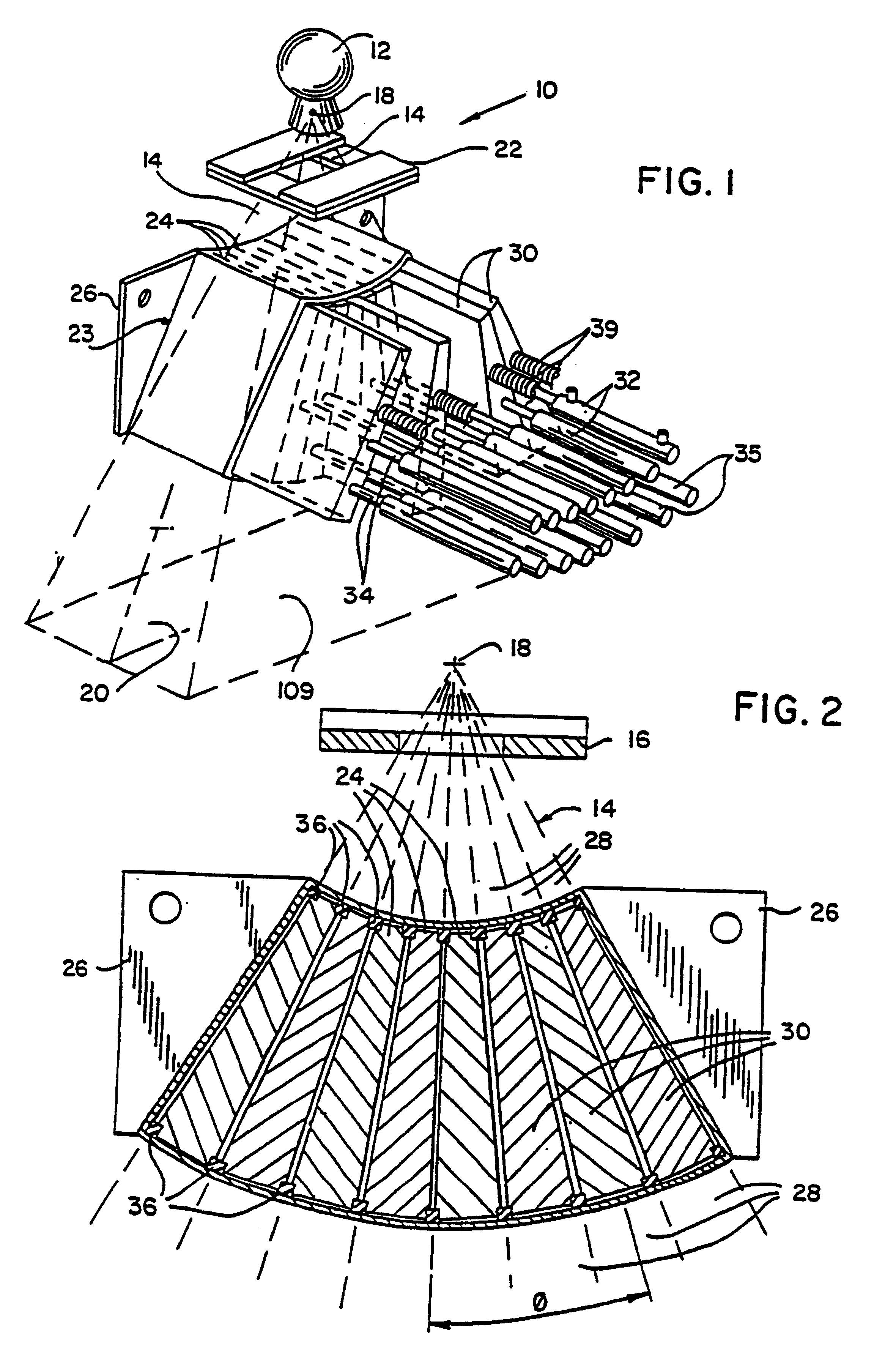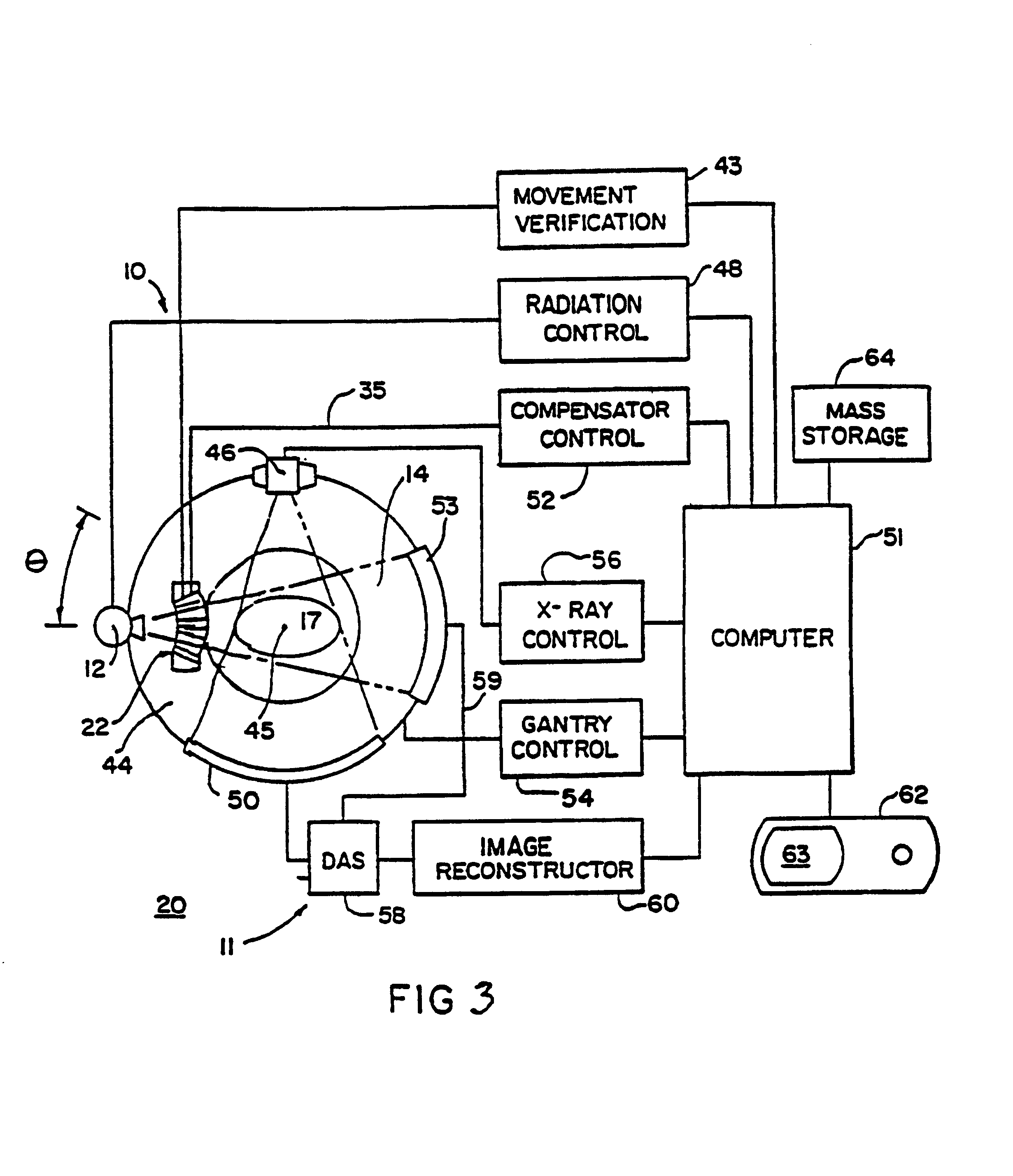Method for preparing a radiation therapy plan
a radiation therapy and plan technology, applied in the field of radiation therapy planning, can solve the problems of severe burden on computer memory, complicated preparation of treatment sinogram from dose map,
- Summary
- Abstract
- Description
- Claims
- Application Information
AI Technical Summary
Benefits of technology
Problems solved by technology
Method used
Image
Examples
example 2
A radiation treatment plan was optimized according to the methods of the present invention by considering a cumulative dose volume histogram (DVH). The cumulative DVH provided a DVH-based penalty which was accounted for in the computation of the update factor during the optimization process. The update factors were modified to include a penalty if a specified voxel in the sensitive structure received a dose between D.sub.max and D*. D* was defined as the current dose of which V.sub.max was exceeded.
The characterization of the penalized voxels is illustrated in FIG. 6. The penalized voxels represent the sensitive voxels of the area receiving the smallest excess dose above D.sub.max. These particular voxels were penalized because they required the smallest reduction in dose in order to satisfy the DVH specification. Accordingly, the subset of penalized voxels changes with each iteration.
FIGS. 8a and 8b present results from an optimization process which utilized a dose volume specifica...
example 3
FIG. 9 represents the results of a treatment optimization simulation involving a U-shaped treatment volume and a DVH-based penalty system. In this simulation, a penalty was added if more than 25% of the sensitive areas exceeded a dose of 0.1.
FIG. 9b represents the objective function value over the course of the optimization. The solid line depicts the value of the sum of the squared differences between the prescribed and the actual doses over the entire treatment volume and the sensitive areas. The dash line is the actual objective function that is minimized when a DVH-based penalty is employed. Specifically, it is the sum of the squared differences between the delivered dose and the prescribed dose over all voxels in the treatment volume, plus the sum of the squared differences between the delivered dose and the dose limit of the penalized voxels. Note that both of these functions decreased in value with each successive iteration.
example 4
DVH specifications were also tested on a simulated prostate treatment plan. In this case, the prostate was prescribed a dose of 80 Gy. The rectum DVH specifications were: (1) add a penalty if more than 15% of the rectum exceeds a dose of 25 Gy and (2) add a penalty if any voxels are above 50 Gy. The bladder DVH specifications were: (1) add a penalty if more than the 40% of the volume exceeds a dose of 27 Gy and (2) penalize all voxels over 54 Gy.
The results of the prostate simulation are shown in FIG. 10. Note that the 95% isodose line closely matches the border of the target. The four DVH specifications are plotted in FIG. 10b.
PUM
 Login to View More
Login to View More Abstract
Description
Claims
Application Information
 Login to View More
Login to View More - R&D
- Intellectual Property
- Life Sciences
- Materials
- Tech Scout
- Unparalleled Data Quality
- Higher Quality Content
- 60% Fewer Hallucinations
Browse by: Latest US Patents, China's latest patents, Technical Efficacy Thesaurus, Application Domain, Technology Topic, Popular Technical Reports.
© 2025 PatSnap. All rights reserved.Legal|Privacy policy|Modern Slavery Act Transparency Statement|Sitemap|About US| Contact US: help@patsnap.com



